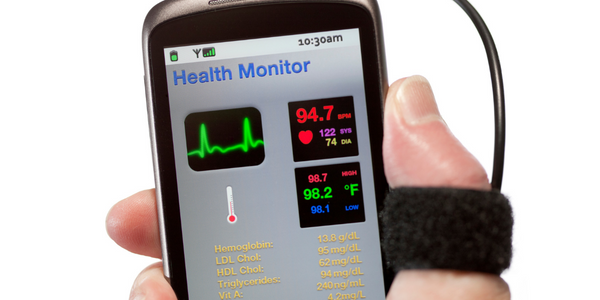Customer Company Size
Mid-size Company
Region
- America
Country
- United States
Product
- Alteryx
Tech Stack
- SQL
- SOAP API
Implementation Scale
- Enterprise-wide Deployment
Impact Metrics
- Cost Savings
- Productivity Improvements
Technology Category
- Analytics & Modeling - Big Data Analytics
Applicable Industries
- Healthcare & Hospitals
Applicable Functions
- Procurement
Use Cases
- Fraud Detection
- Predictive Quality Analytics
Services
- Data Science Services
About The Customer
SCAN is a non-profit Medicare Advantage organization serving California. The organization serves approximately 200,000 members, largely in the Southern California region. The Centers of Medicare and Medicaid require health plans to have a fraud, waste, and abuse program. SCAN achieves this through the Special Investigations Unit. This unit investigates allegations that might have an adverse financial or compliance impact on members or the program. The team is responsible for identifying and addressing issues that could potentially harm the organization or its members.
The Challenge
In early 2017, SCAN, a non-profit Medicare Advantage organization serving California, started receiving reports from members about receiving unwanted Lidocaine ointments by mail. This scheme had started affecting the industry in 2015, but had not yet impacted SCAN at a significant scale. The challenge was to identify the source of this scheme and stop it from further affecting the members and the organization financially. The Special Investigations Unit at SCAN was tasked with investigating these allegations that might have an adverse financial or compliance impact on members or the program. The team had to figure out the chances of one member being served by many pharmacies, dozens of members going to the same pharmacy outside California, every patient getting the same high quality, and several pharmacies sharing the same address.
The Solution
The Special Investigations Unit at SCAN used Alteryx, a data analytics platform, to investigate the allegations. The team used the network analysis tool in Alteryx to identify abnormal behavior and prioritize resources and investigations. The tool helped them visualize normal behavior versus abnormal behavior and identify more pharmacies with similar practices. The team also used Alteryx to monitor prescriptions for 1,000 affected members weekly for the same dispensing patterns from new pharmacies and adjust for new schemes. They also used Alteryx for spatial analysis, mapping distance and drive time for potential drug-seeking members and those receiving prescriptions or services from out of area. They also integrated with third-party data sources, retrieving data from regulatory bodies.
Operational Impact
Quantitative Benefit

Case Study missing?
Start adding your own!
Register with your work email and create a new case study profile for your business.
Related Case Studies.

Case Study
Hospital Inventory Management
The hospital supply chain team is responsible for ensuring that the right medical supplies are readily available to clinicians when and where needed, and to do so in the most efficient manner possible. However, many of the systems and processes in use at the cancer center for supply chain management were not best suited to support these goals. Barcoding technology, a commonly used method for inventory management of medical supplies, is labor intensive, time consuming, does not provide real-time visibility into inventory levels and can be prone to error. Consequently, the lack of accurate and real-time visibility into inventory levels across multiple supply rooms in multiple hospital facilities creates additional inefficiency in the system causing over-ordering, hoarding, and wasted supplies. Other sources of waste and cost were also identified as candidates for improvement. Existing systems and processes did not provide adequate security for high-cost inventory within the hospital, which was another driver of cost. A lack of visibility into expiration dates for supplies resulted in supplies being wasted due to past expiry dates. Storage of supplies was also a key consideration given the location of the cancer center’s facilities in a dense urban setting, where space is always at a premium. In order to address the challenges outlined above, the hospital sought a solution that would provide real-time inventory information with high levels of accuracy, reduce the level of manual effort required and enable data driven decision making to ensure that the right supplies were readily available to clinicians in the right location at the right time.

Case Study
Gas Pipeline Monitoring System for Hospitals
This system integrator focuses on providing centralized gas pipeline monitoring systems for hospitals. The service they provide makes it possible for hospitals to reduce both maintenance and labor costs. Since hospitals may not have an existing network suitable for this type of system, GPRS communication provides an easy and ready-to-use solution for remote, distributed monitoring systems System Requirements - GPRS communication - Seamless connection with SCADA software - Simple, front-end control capability - Expandable I/O channels - Combine AI, DI, and DO channels

Case Study
Driving Digital Transformations for Vitro Diagnostic Medical Devices
Diagnostic devices play a vital role in helping to improve healthcare delivery. In fact, an estimated 60 percent of the world’s medical decisions are made with support from in vitrodiagnostics (IVD) solutions, such as those provided by Roche Diagnostics, an industry leader. As the demand for medical diagnostic services grows rapidly in hospitals and clinics across China, so does the market for IVD solutions. In addition, the typically high cost of these diagnostic devices means that comprehensive post-sales services are needed. Wanteed to improve three portions of thr IVD:1. Remotely monitor and manage IVD devices as fixed assets.2. Optimizing device availability with predictive maintenance.3. Recommending the best IVD solution for a customer’s needs.

Case Study
HaemoCloud Global Blood Management System
1) Deliver a connected digital product system to protect and increase the differentiated value of Haemonetics blood and plasma solutions. 2) Improve patient outcomes by increasing the efficiency of blood supply flows. 3) Navigate and satisfy a complex web of global regulatory compliance requirements. 4) Reduce costly and labor-intensive maintenance procedures.

Case Study
Cloud-based healthcare solution for Royal Philips
Royal Philips wanted to launch its cloud-based healthcare solution HealthSuite Digital Platform in China to deliver services to help cope with challenges related to urbanization and population growth. Philips wanted to achieve this goal by combining mobile, cloud computing and big data technologies. To bring this platform and product to market, Philips required cloud computing and local technical service capabilities in China, in addition to a flexible IT infrastructure that could handle user requests.








